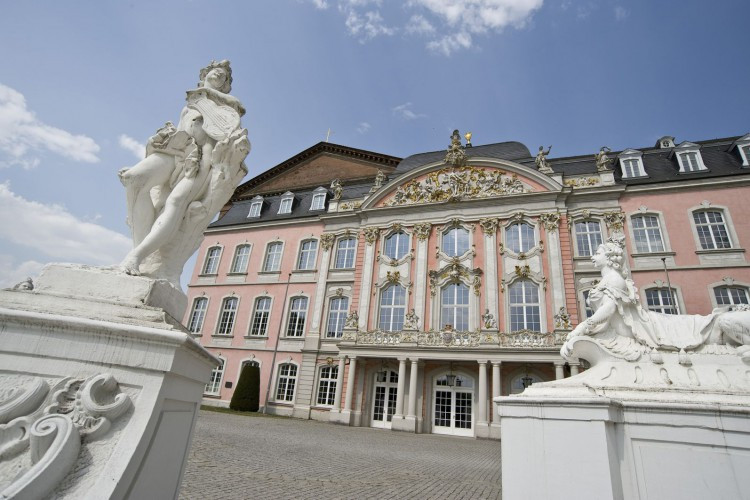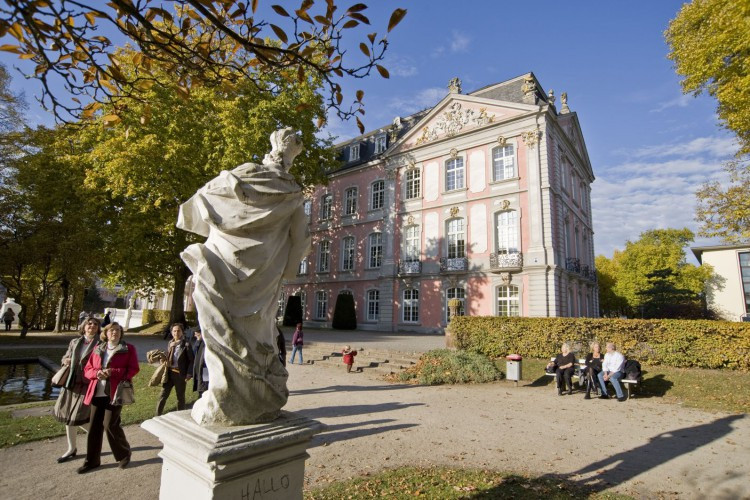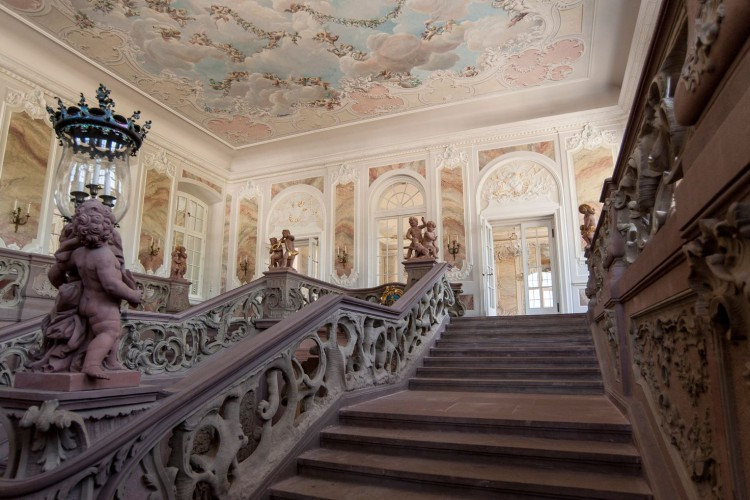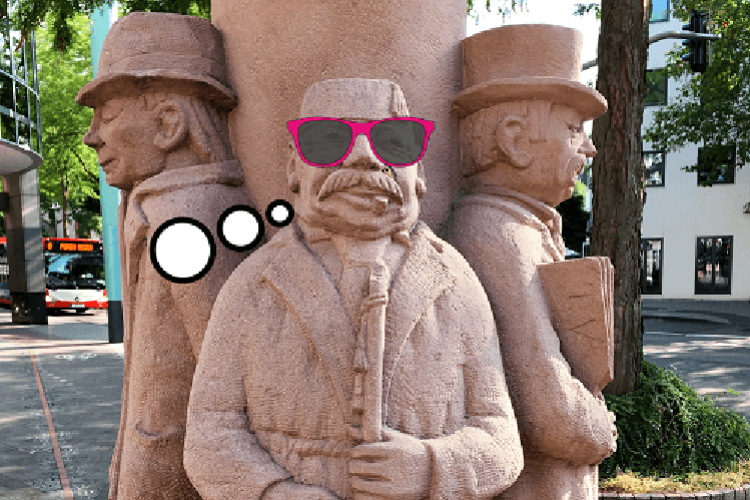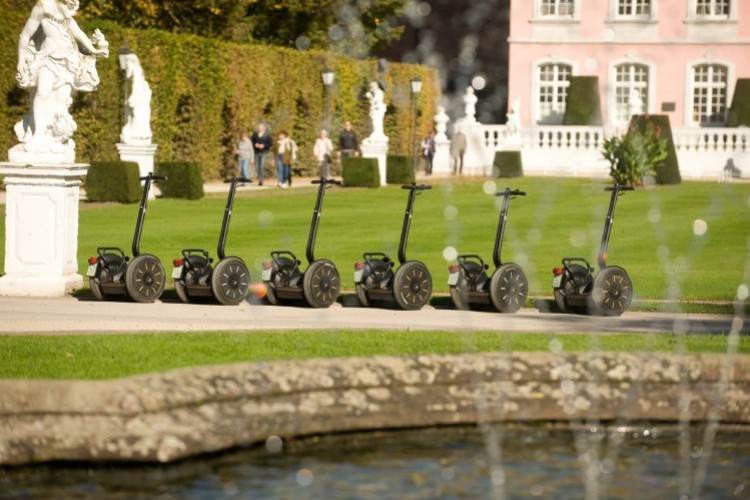So it’s no wonder he arranged for Emperor Constantine’s highly symbolic throne hall to undergo extensive renovation. Trier’s bishops had been using it as a castle since as early as the turn of the millennium; now, in the late 16th century, the ancient palace assembly hall was narrowed, and three Renaissance-style wings added. But that wasn’t enough: In the north, the construction teams began building a ‘lower palace’ with utility rooms and an archive building (today the ‘Red Tower’ housing the bells of the Basilica of Constantine).
In the 18th century, however, rococo was the defining architectural style – which was unfortunate for someone who wanted his residence to reflect the prevailing tastes of the time. In 1756, therefore, the Renaissance southern wing was replaced by a rococo-style wing. Johannes Seiz, a student of Balthasar Neumann, was once again awarded the contract, having also helped out with St Paulin’s, the cathedral, and the St George’s fountain at Kornmarkt Square. The artistic staircase inside the palace is one of his particular masterpieces. Also involved was Ferdinand Tietz, who had also learned from Neumann. He is responsible for the sculptures in the Palace Garden (now replicas; most of the originals are at the Stadtmuseum Simeonstift City Museum). Although it probably wasn’t something of importance to most Trierers back then, a lack of patronage of the arts is not something the archbishop can be accused of either.
A must for: Rococo enthusiasts. Lovers of detail. Those dreaming of having their own palace.
Pink: 30%
Decoration: 60%
Contrasts: 40%
PSSSST! THE INSIDER TIP:
Be sure not to miss the palace’s northern wing, where you can not only admire the Red Tower more closely, but also be served up the entire history of Trier on a silver…wait, no, that’s wrong…granite platter in the form of the Water Clock Fountain (Wasseruhrbrunnen) by Frankfurt artist Karl-Jakob Schwalbach. Schwalbach, whose design won a competition during the city’s 2000th birthday celebrations in 1984, used four different types of granite on and around the fountain. The five bronze animal figures symbolise five different eras in Trier’s history: The horse represents the Treveri Celtic tribe, the eagle with the fasces represents the Roman period, the lamb with sword and crosier represents the power of the archbishops/electors during the Middle Ages, the dog represents the Prussian rule from 1815 onwards, and the dove serves as a symbol of hope for continued peace in the present and future.
Header: SF/shutterstock.com

